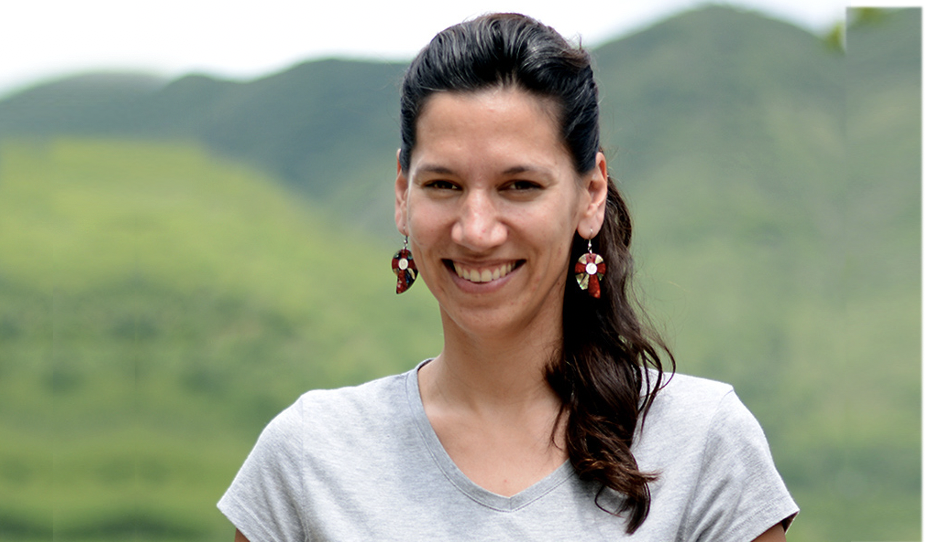Fostering Human Connection and Systems Change

Ella Scheepers is an educator, collaborator and activist in the fields of human rights and social innovation in Southern Africa. She has over ten years of experience exploring unconventional partnerships and innovative approaches to organizational management and well-being, strategic planning, grant-making and network-building across sectors. Ella is currently a PhD student at the Graduate School of Business, University of Cape Town, and is designing two courses: one on systems change for the Africa Philanthropy Forum and another on systems change and social impact for the University of Cape Town.
Ella recently attended Spring’s 3-Day Virtual High Impact Facilitation Intensive. She spoke with us about how the course has been a “phenomenal” asset in her thinking about systems change and fostering human connection in virtual space.
What were some of the challenges you were trying to solve by taking this course?
People who work a lot with embodiment and storytelling really struggle to take their ideas online. That doesn’t mean you can’t create community, but you do have to be more intentional about it. And you have to think much more deeply about your audience.
The SPRING training helped me understand the consciousness that facilitators need to take people on a journey in the technology universe. Technology can feel like “this is the only thing that’s connecting us” right now and that can feel tense, whereas in a room you can feel like there are many other things that connect us.
What do you mean by ‘consciousness’?
In any relationship – in person - or otherwise, there needs to be a consciousness to make it work. For example, I think about my relationship with my partner and how much we reflect together, where we’re at, what we’re feeling, what’s going well and what’s not going so well. You need to do that to get the most out of all relationships, including online facilitation work so that you can guide people on the journey. I wasn’t aware before how important that journey creation was.
What did you learn about creating online journeys?
I realized it requires new skills which I need to develop to be good. First, I need to be comfortable with the technology, because if I’m not, then other people can’t be comfortable with it. Also I can’t separate the ‘process’ of facilitating. I need to understand how all of it works and how the technology and content connect, so the experience is fully integrated for those in the meeting.
What did you learn about preparing for online facilitation meetings?
I learned how much time it takes to design for online. You need to put effort into it. SPRING helped us understand what goes into preparing for a facilitation: they shared there was approximately three hours of preparation time for one hour of online content.
What surprised you about what’s possible with online meetings?
You can have fun! I really enjoyed what the SPRING team did, and I’ve definitely taken this into my facilitation. There were fun questions, invitations to share things and different energy paces. They created a sense of relaxation, even when there were issues with technology, you were still calm, so I realized it’s OK: you can still hold space in that way. There can be fun and moments of looseness even when technology makes it feel tense.
Speaking of tension, have you had any moments in your virtual facilitation where there was tension, or you felt like the energy was being lost, and how did you work with that?
I’m part of a coronavirus Community Action Network (CAN) which started in March in South Africa where neighbourhoods are mobilizing and organizing in response to COVID-19. It includes a diverse group of people with different political and cultural backgrounds. In one meeting, someone said something very problematic, using victimizing language. My response was to acknowledge that the words that were being said were coming from a good place, but that they might be received another way. It was a kind of reflecting and mirroring of the experience of people who could have found that offensive. Making it seen, making it known, but in a way that didn’t make the person who had said it feel blamed. And then translating it into the language of the group. In virtual space I was able to have a translation role and a reflecting role. SPRING showcased how to do that well: it’s not about ignoring tense situations, but rather making it visible, and allowing it to be in the psyche of the group. And that was effective because people didn’t have to get angry in that space, and especially because we continue to be neighbours and in community with each other.
If you are already an experienced facilitator, why is it important to learn about virtual facilitation?
The SPRING training is not necessarily for people who want to become facilitators; it’s for people who are facilitators but want to find ways to create a better online environment. And that was what was useful for me. It’s specifically designed for this virtual world that we’re moving into, and all of us are a little bit wide-eyed and probably a little bit naïve in terms of what you can move from an in-person space into an online space.
Basic meeting design elements, and how we use simple tools – like Google Slides – all show up differently in a virtual forum. This was completely new for some people. Because we’re learning as we’re going, right? There’s a lot of really subpar online facilitation at the moment, because people are winging it – completely understandably. This is why I suggested SPRING’s training to a lot of my friends and my colleagues: all of them are very good at what they do, and they’re great facilitators who now need to transition those skills into virtual space.
Did any specific tools stand out for you?
I love the Orienting Quadrants exercise and shared it with a colleague who has been struggling to get their team to feel motivated. It’s a great tool to get a conversation started, in the sense of being able to name each other and what role you each play in an organization, and where you sit comfortably. Are you more action-oriented? Or relationship-oriented? And even in that brief conversation, that person was able to say, “ah, that’s what’s missing at the moment.” A relationship person can acknowledge their challenges with process, for example. Or a leader might understand their lack of comfort in being relational. Then this conversation can support exchanges about how we work together. For example, you might observe together that a relationship element is missing in online engagements, and some improvements could be made. It’s been really useful for me; it made me a lot more conscious about what wasn’t working so well and why.
Tags:
CollaborationAugust 19, 2020

